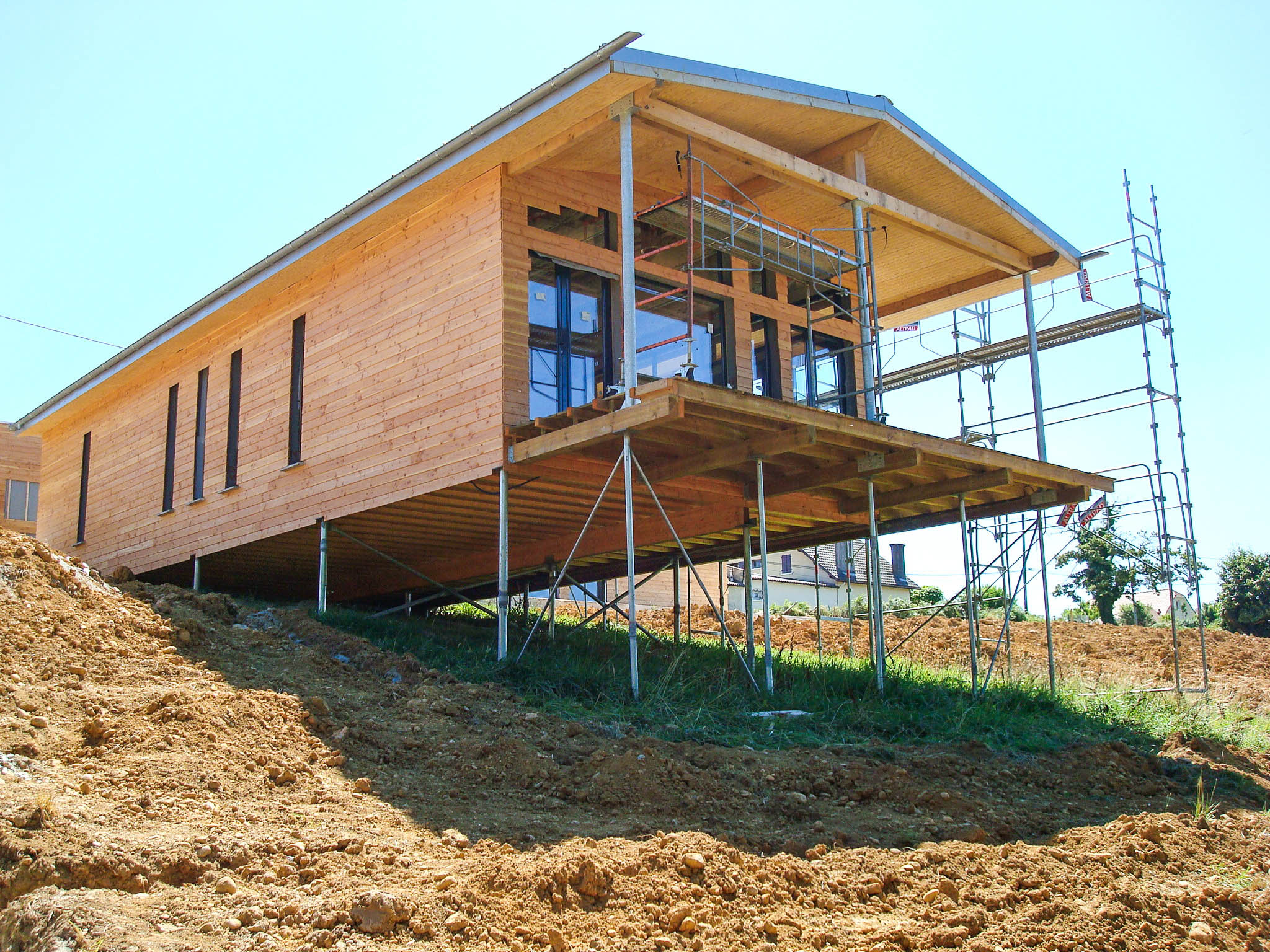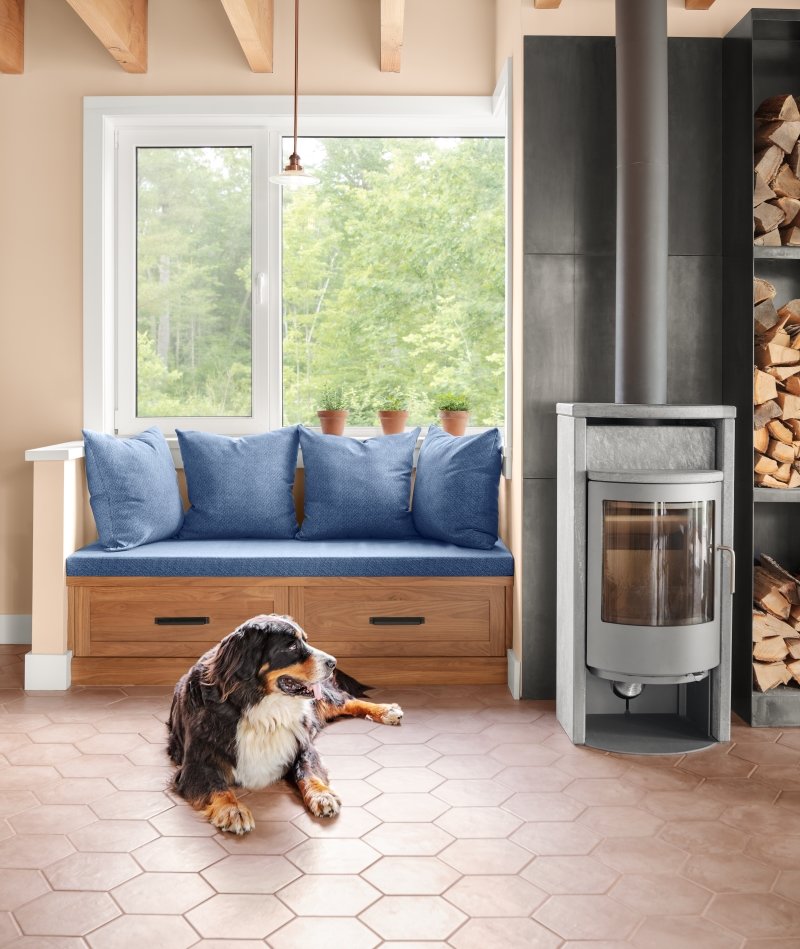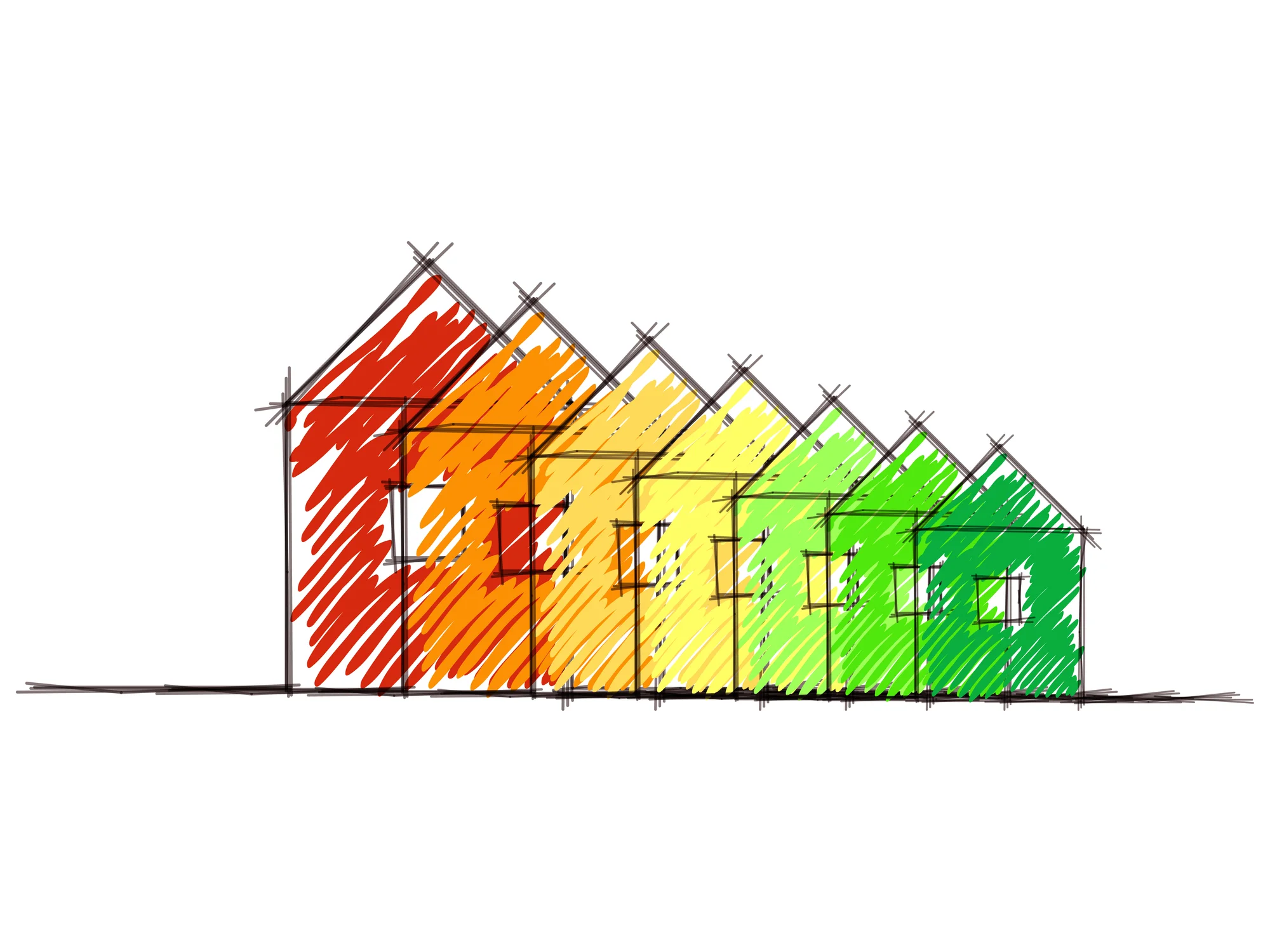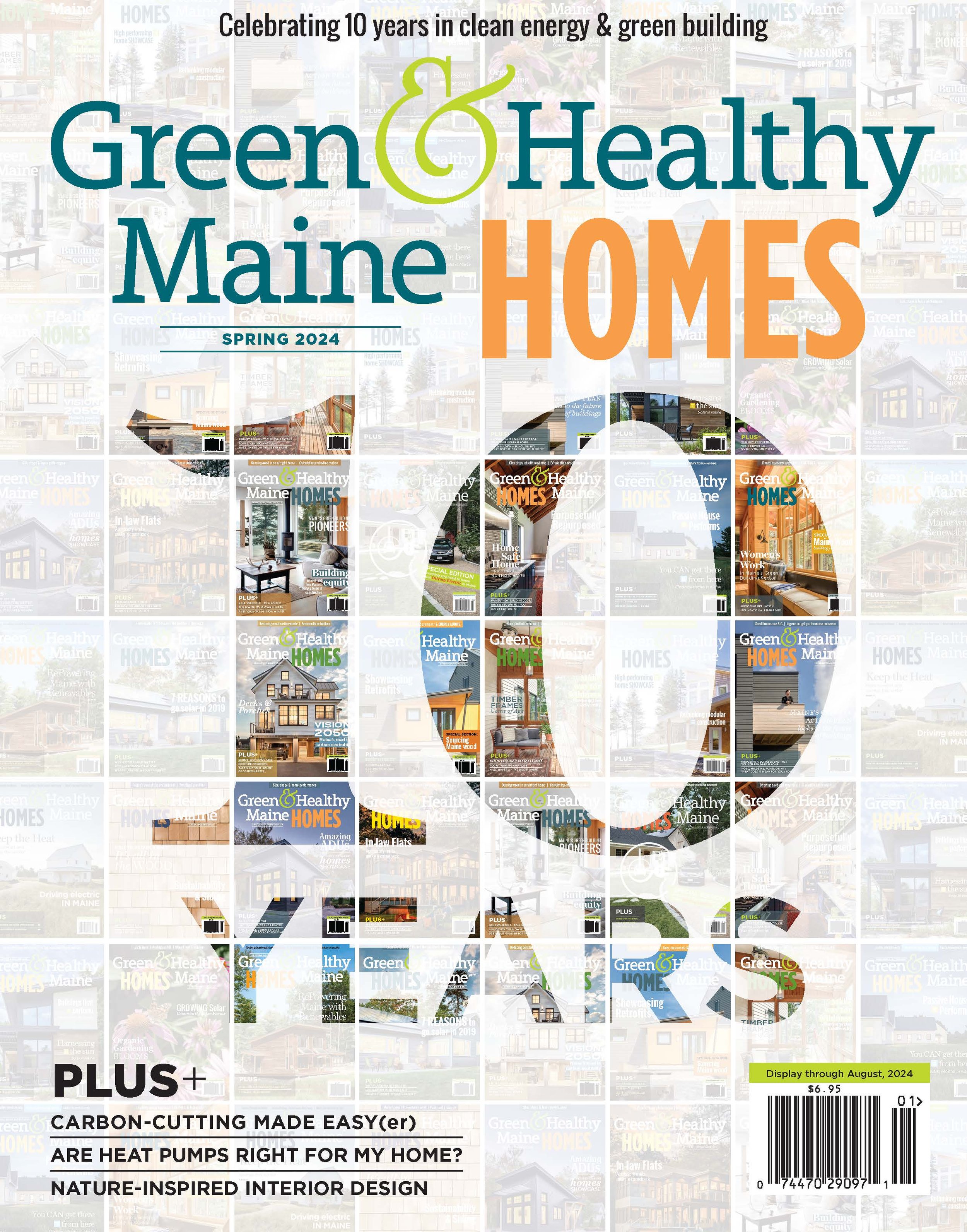Sensible swaps for high-performance
Building science 101
By Parlin Meyer
PICTURE THIS: It’s a cool spring morning and you’ve just settled down at your desk to enjoy an energizing cup of coffee. As the day warms, the temperature in your home stays in perfect balance. How? The magic of high-performance windows and ventilation.
It can be easy to take for granted the intricate science behind the structures we live in. Whether you’re breaking ground on a new dream house or giving your current abode a facelift, building science is key to creating a space that is as energy-smart as it is stylish. While you probably want to consult with a building science–minded professional for big projects, gaining a little understanding can help you see where you can make simple swaps with relatively high impact.
TROUBLESHOOT AND MAKE A PLAN
Being a homeowner can have its challenges, and while we can’t all be designers, engineers or builders, we can certainly learn to think more like them. When it comes to assessing and managing the flow of your home, you can choose to make arbitrary updates or upgrades. But a comprehensive game plan is the best long term bet against performance shortfalls.
Why not make a pact with yourself when you have a planned (or unplanned!) repair: When there is an energy upgrade opportunity, take it! For instance, if you are opening up an exterior wall to replace siding, add insulation. Or, if you plan to install a new range, opt for a new PVC hood transition with baffle so that it can be properly air-sealed with tape and caulking.
Where it’s affordable and advisable, consider hiring a professional to help execute these changes.
-
It’s a lot easier to wrap a new box than repair holes in the wrapping on an existing box. In the same way, new construction has the advantage when it comes to air sealing. And, with plenty of foolproof products in the market today, a home is much easier to air seal than ever before.
Swapping out old-school (and still code-compliant) billowy house wrap for a peel-and-stick, vapor-open weather resistant barrier gives you double-duty performance by providing a barrier for both water and air. Moreover, weather stripping, tape and caulking can go a very long way toward reducing air leaks.
It is important to note that a better sealed home (whether new or existing) should have mechanical ventilation to allow for better air control and minimize air leaks coming through cracks and seams, which is one of the primary ways to combat heat loss and conserve energy.
-
Did you know that installing insulation can be simple and cost effective? Aside from the discomfort of having unwanted hot or cold air come into your home, inadequate insulation can cause problems in terms of energy efficiency and added moisture. The “hat and boots” method is a common approach in insulation improvements to make the biggest impact without, potentially, the need for a deep retrofit—with the “hat” being the attic and the “boots” being the basement or crawlspace. These are two areas that generally are easy to access and historically poorly addressed when it comes to insulation. Increasing insulation, particularly where it can coincide with good air sealing practices, can be a low-cost way to significantly reduce heat loss.
In new construction, low-cost high-performance insulation strategies are plentiful. The most accessible materials are densepack cellulose or wood fiber (shout out to Maine manufacturer TimberHP!), and these also come with low- or positive-carbon impact.
-
Insufficient insulation around outlets in exterior and interior walls can funnel air into your living space and result in lost heat and higher utility costs. But the solution is easy: Outlet and switch sealers, available at most hardware stores, reduce air infiltration. Installation requires nothing more than a screwdriver.
In new construction, electric outlet receptacles should be taped to an interior vapor barrier and surrounded by a blanket of well-placed or densely packed insulation.
While we’re on the topic of residential electricity, swap out incandescent and compact fluorescent lamp (CFL) light bulbs for LEDs. They last longer and use significantly less energy to operate. When it comes to saving electricity, these swaps are low-hanging fruit with huge rewards.
-
Water is your home’s worst enemy; from moldy walls to soggy ceilings, excess moisture can wreak havoc on your living space. And yet, water is an ever-present fact of life for a homeowner. When that kitchen faucet leak starts getting to you—or gets to the bottom of your sink cabinet—replace it with a low-flow faucet or, even better, one with the WaterSense label to be sure you get the highest-performing, most-efficient hardware. The same goes for bathroom faucets and shower heads.
Restrictors can be added to many faucets to restrict water flow and, often, help to increase pressure by allowing the water to flow at a constant rate.
In new construction, look for WaterSense fittings and dualflush toilets to conserve water usage.
-
Somewhat surprisingly, the cost difference between traditional window installations (which are prone to drafts because they are concentrated on water mitigation and don’t address air sealing), and high-performance installations isn’t huge. If your builder can get their team on board with some careful taping and sealing, the performance of your windows can significantly improve. Window type can also impact performance with little to no bearing on cost: opt for casements, awnings, fixed, or tilt-turn style windows as opposed to double-hung, single-hung, or sliding.
Window choices are easiest in new construction, but for existing homes, low-cost solutions can provide appreciable gains. In homes with drafty windows, a seasonal window insert can be added to each unit. A simple wood frame with clear plastic stretched and sealed to it, with a foam gasket, can be press-fit into each window bay. Spending a little on inserts—or building them yourself—can retain lot of extra warmth in the winter without replacing your windows.
-
While at first solar power might seem like a luxury item and less of a low-barrier option, the math on short- and long-term return on investment says otherwise. When you consider the current cost of energy, a solar array that can cover your entire monthly electric bill will likely, when financed, cost less than your monthly electricity payment and eventually provide free electricity. Reach out to a local installer for a quote, inquire about their financing plans, and then run a comparison to your regular bills from your utility. The results can be eye-opening.
If you are a renter or don’t have the right orientation, clear access, or roof area for solar panels, explore community solar options. This involves less upfront investment and slightly less direct financial gain, but you will zero out the fossil fuel production connected to your electric loads.
SMALL MOVES, BIG GAINS
Whether you’re renovating an existing home or building a new one, incorporating high-performance concepts can help you create a healthier, more efficient and comfortable living environment, not to mention the cost savings involved.
Understanding the principles of building science empowers us to make informed decisions and maintain our homes more efficiently. The sky’s the limit—the only thing standing between you and your dream home is a little bit of know-how.
Read More: Building Science 101
This article appeared in the Spring 2024 edition of Green & Healthy Maine HOMES. Subscribe today!
Find Maine experts that specialize in healthy, efficient homes in the Green Homes Business Directory.














